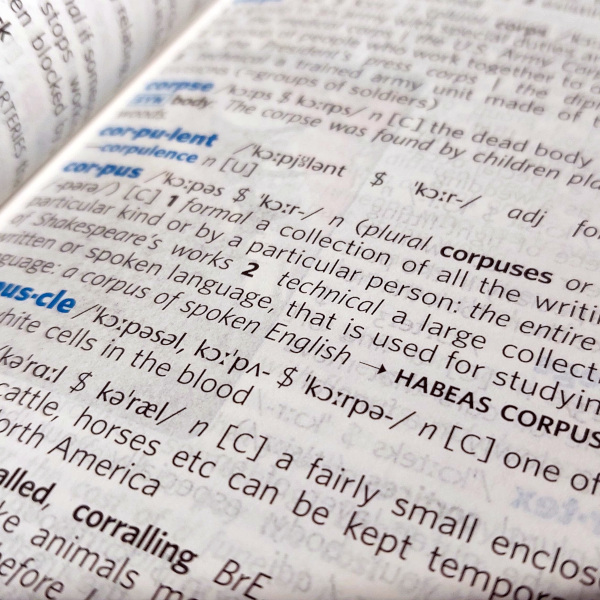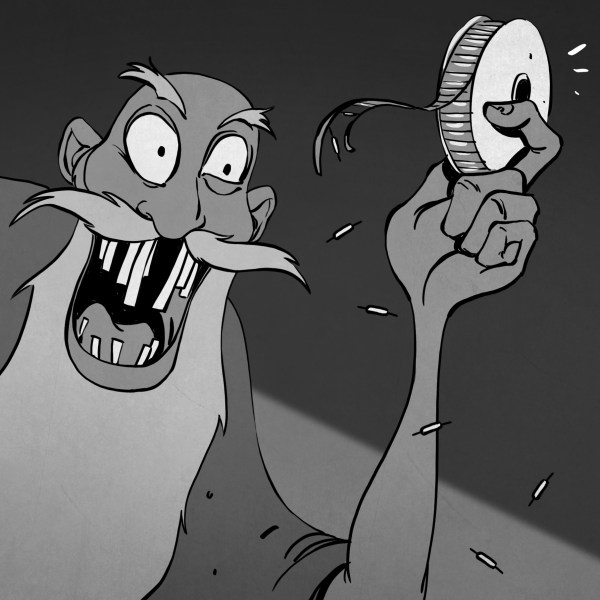
Of all the musical instruments out there, the keyboard is among the worst for changing the pitch and timbre of individual notes. Wind and stringed instruments can do this easily in the hands of a skilled player, but outside the wheel and joystick controls of a few electronic keyboards, tickling the ivories means the only thing you can really change about how something sounds is the volume.
TouchKeys wants to put an end to this severe lack of dynamics available on keyboard instruments. Basically, it turns every single key on a keyboard into a multi-touch sensor, allowing any keyboardist to change the pitch, filter, timbre, or any other parameter of their instrument simply by moving their finger around on a key.
TouchKeys works by overlaying all the keys on a keyboard with circuit boards that plug into a module hidden under the hood. These boards are studded with capacitive sensing points, allowing a computer to recognize where the player is touching each key, and modifying filters or volume for each key independently.
The TouchKeys Kickstarter is offering a kit to equip a 25-key keyboard with these sensors for about $550. A hefty price tag, but hopefully we’ll see this tech in real production keyboards in the future.















Many many professional keyboards have what is called “aftertouch” which allows you to control things by how you press your finger on the key. This can be connected to pitch, volume, vibrato, etc.
I suppose this kit could add a whole new interesting control scheme as well though.
Unfortunately 99.9% of the professional boards out there implement channel aftertouch, which while being somewhat nifty and handy in certain scenarios is more of a gimmick then anything. Channel AT only reports the average pressure of all keys behind held down and that’s it. There is no way to figure out which keys are being pressed down and how hard- which limits what you can do with it considerably (so it would be impossible to split your board and play two instruments with Channel AT- you wouldn’t be able to tell which side is generating the AT events).
A very few ultra high-end keyboards implemented another system called Polyphonic Aftertouch. Poly AT offers reporting on each individual key- that is to say, the computer can tell precisely which key is being held down and how hard. This allows for far, far more flexible playing and utility when it comes to synthesis and even live performance. One such board was the VAX77 made by Infinite Response (I own one, unfortunately they got discontinued recently). They used hall effect sensors under each key along with calibrated magnets on the key itself and a high speed Blackfin DSP to figure out what key was being pressed and the residual pressure on that key for Poly AT.
This kit doesn’t seem to be geared towards channel or poly AT though. It offers X+Y coordinate reporting, but that seems like that would be about as useful as it would get. You can’t rely on the size of the touch event to judge pressure because that changes just depending on how your finger is positioned on the key- ie, rolling your finger around could be mistaken for a harder press when in fact it is not. And that all changes depending on the size of the fingers of the player, so you can’t really use it to generate AT events in any sane manner.
At best, the whole thing looks like a bit of a toy for synth heads. I can’t see how this would be preferential to poly AT for playing a virtual piano. I guess it kind of makes sense for instruments other then the piano in the same way an Eigenharp can be programmed to do some wild stuff (they’ve got X/Y/Z pressure reporting on each key, plus an accelerometer, touch strip, and mouth piece). But again, it seems like something that you’d use when you’re not playing the piano like a piano.
That’s pretty interesting. As you said, this could afford for even more control.
On the other hand, it seems something like this would be quite hard to master. You can do some interesting bends, slaps, etc, with string instruments, but you’re generally only dealing with 4 to 6 strings.
Still a really cool idea.
This is actually quite old school. Done and forgotten long ago. The Ensoniq keyboards from the 80s and 90s had polyphonic after touch. Each key has a metal plate under it and there is a circuit board with a trace shaped like an inductor that senses the proximity of the key to the pcb.
This sounds like the worst thing ever. I have played the piano for 10 years. The way you compensate for the lack of tonal shifts is with varied note combinations. Vibrato is easy enough by hand, if you’re willing to keep it there for that long, and if you’re messing with pitch and timbre, you probably just need to tune your piano.
Then again, this is all being done to an electronic piano anyway, so I guess it’s fine. The current systems are quite inadequate for simulating a real piano’s feel, so why not make it more interesting?
You are clearly more of a pianist than a general musician.
For anyone working with synths this is a godsend.
Right off the bat it solves two particular annoyances I have with pitch bend and mod wheels:
1) the inability to isolate its effects – eg you play pad chords with the left hand, a lead patch with the right hand and want to bend only the lead note; or you want to play guitar-style ‘double stops’ and want to play two notes where the lower one bends up into the second note; or you have the mod wheel assigned to volume and want to swell in certain notes independent of velocity/attack but not swell the volume of other notes
2) requiring you to sacrifice one hand to manipulate the mod/pitch wheel/joystick/whatever
The biggest appeal I see is for insanely expressive synth patches with intuitive real-time control over the various parameters.
Not to mention the possibilities for microtonal music…
as if hitting the right notes isn’t hard enough now you have to hit them in the right place!
Welcome to playing a string instrument, no guitars don’t count with their frets. Ever played a violin, viola, cello, double bass? You have to hit the notes in just the right place or you’ll be out of tune.
I played cello for many, many years. The muscle memory makes fingering quite easy, even moving between positions.
I suppose for simple numbers it may be great but with hand position and streching involved i can only imagine this being very difficult.
Perhaps I just need more practice…
I would imagine that the system takes the original placement of your finger when pressing the key into account, then any further movement from that origin is what adjusts things. That’s just how I would do it.
As andarb wrote: for the pitch-bends and vibrato, we use relative position of the finger (based on where you first touched the key). So the only time you need to think about where to place your finger when starting a note is when you are planning to perform a large pitch-slide up or down: you need have enough length of the key above or below your initial touch (on the Y axis) in order to enable you to perform a slide by the intended interval.
Additionally, we have developed algorithms, which prevent the vibrato or pitch bends from being unintentionally initiated. In the case of pitch slides (y axis) we also have a mechanism, which makes it easier to play in-tune: it will pull you to the nearest semitone at the end of your pitch slide gesture. We wrote a paper about it, which was published in the latest CHI proceedings.
Sounds much like a continuum fingerboard minus the hefty price tag
It sounds EXACTLY like a haken continuum! Glad im not the only one who thought so.
Bob Moog came up with this decades ago, although it was mechanical rather than touch sensors, and was too expensive to produce. He had a prototype kicking around for a while. It was a combination of per-key aftertouch and sensors in each key to detect when the player pushed the keys to the left and right.
And Moog, pioneer that he was, wasn’t even the first. The Ondioline invented in 1941 was an electronic instrument (not really a synthesizer) that had a piano-like keyboard the user could wiggle from side to side fromy any key.
Jean-Jacques Perry was a noted Ondioline player years before synths. On Youtube there are some amazing performances of him and others demonstating the Ondioline and how it could mimic a number of traditional instruments – a decade before the Moog.
There are even circuit diagrams of this instrument on the web, not sure if anyone has reconstructed a new one but the originals are rare and of course highly valued.
ondes martenot had a keyboard you could wiggle and that was in the 20s or 30s
still would be cool to get some vibrato on the keys these days
Seems like everyone pretty much covered my thoughts. There is a reason that controls ended up the way they did ;)
You could easily extend this to be a training platform too.. like a typing asstant program or something
This would be good to have for live playing!
The drawback of (polyphonic) aftertouch is that it is only really useful for controlling the depth of an effect rather than having absolute control over the vibrato as demonstrated in the video.
Having a “Y axis” is also pretty neat.
It would be fantastic if this could be built into a keyboard – the add-on system looks a bit clunky – maybe they could make up some 3d printed key designs which are drop-in replacements for keys from popular controller keyboards, with cavities for their sensor boards.
That said, polyphonic aftertouch – the closest thing to this that already exists – always has been extremely rare so I’m not sure how much calling there is for something like this. If you’re playing a lead line then the monophonic aftertouch (“Channel Pressure”) on most keyboards is perfectly sufficient.
Time will tell! But good luck to ’em!
This makes me feel really dumb for not patenting this back in 2009 when I thought of it. Then I stupidly brought the idea up (I was asking for pointers) in front of a guy demoing the Magnetic Resonance Piano (their other big project) at MIT. Guess I got what was coming to me.
It’s really cool though. I’m just trying not kick myself too hard.
No mention of The Electronic Sackbut?